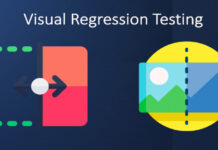These days, it seems like everything is driven by data. Businesses use data to make decisions about everything from product development to marketing to sales. So why should education be any different?
The fact is, data can be just as useful for schools as it is for businesses. By harnessing the power of big data, schools can make informed decisions that could have a positive impact on everything from student performance to budgeting.
What is education analytics?
Education analytics is the process of collecting and analyzing data with the goal of improving educational outcomes. This data can come from a variety of sources, including student transcripts, test scores, surveys, and even social media.
When this data is properly analyzed, it can provide insights that can help schools make informed decisions about everything from curriculum development to resource allocation.
How does BI relate to education?
Put simply, BI helps schools make sense of the vast amount of data they collect on students, teachers, and parents. It can be used to track student performance, understand teacher effectiveness, and much more. In short, BI gives educators the power to make informed decisions that improve student outcomes. There are a few key ways in which business intelligence can be used in education:
Business intelligence can help educators track student progress over time
In a world where data is becoming more and more important, business intelligence provides a valuable tool for educators who want to ensure that their students are successful.
By using business intelligence tools, educators can track student progress over time and identify areas where students may be struggling. For example, BI tools can help year 12 classes track student progress over time. This is done by saving and categorizing data from year to year, which can be used to identify areas where students may be struggling. The information can then be used to better inform instructional decisions.
Likewise, BI tools can help administrators track attendance and identify patterns of truancy. Schools can also use BI to predict enrollment trends and ensure that they have the resources in place to meet future demand. Hence, business intelligence is playing an increasingly important role in education.
BI tools can help schools track student progress and identify areas of need
By analyzing data on factors such as grades, test scores, and attendance records, schools can identify early warning signs and intervene before problems arise. Additionally, BI can be used to monitor students’ post-secondary outcomes, such as college graduation rates and career placement rates. This information can be used to assess the effectiveness of pre-college programs and identify areas for improvement.
BI tools can help identify struggling students and provide targeted assistance
The data that these tools collect can reveal patterns that may be indicative of a student’s struggles. For example, a student who consistently misses homework deadlines or has low grades in specific subjects may be struggling with time management or a specific content area. By identifying these patterns, educators can provide targeted assistance that can help the student succeed.
In addition, business intelligence tools can also help to monitor the progress of students who are struggling and ensure that they are receiving the appropriate level of support. By using these tools, schools can ensure that no student falls through the cracks and that all students have the opportunity to succeed.
Educators can use BI data to better understand how their teaching style impacts student learning
Business intelligence data offers educators a comprehensive view of how their teaching style impacts student learning. The data can be used to better understand which instructional methods are most effective and where there is room for improvement. By understanding the impact of their teaching on student learning, educators can make informed decisions that will improve student outcomes.
School administrators can use BI tools to engage with parents
Engaging parents in their child’s education can be a challenge for schools. But BI tools can help by providing insights into parent preferences and behaviors.
Business intelligence reporting services can help identify which parents are most likely to be involved in their child’s education and what kind of engagement they are interested in. This information can then be used to develop targeted strategies for engaging parents.
For example, if the data shows that a particular group of parents is interested in attending school events, the school could make an effort to promote these events to that group. By using BI tools to better understand parent preferences and behaviors, schools can develop more effective strategies for engaging this important stakeholder group.
School administrators can make informed decisions about everything from budgets to curriculum development
Let’s say a school district wants to know how much money it should allocate for professional development. By using BI tools to analyze past spending patterns, the district can get a better sense of how much money it will need to set aside. In addition, BI tools can track which students are most at risk of not finishing high school, the school can target its resources and interventions more effectively.
What are some of the key features of a good business intelligence solution for schools?
When it comes to making decisions about school operations, data is king. A good business intelligence solution for schools provides educators with easy access to the data they need to make informed decisions about everything from class schedules to budgets. Here are some of the key features to look for in a good business intelligence solution for schools:
Real-time data. A good business intelligence solution should provide educators with up-to-date data that they can use to make decisions in the moment.
Flexible reporting. A good business intelligence solution should offer a variety of reports and dashboards that can be customized to meet the specific needs of educators.
Easy export. A good business intelligence solution should allow educators to easily export data into other applications for further analysis.
Data security. A good business intelligence solution should have robust security features in place to protect sensitive data.
By considering these key features, schools can choose a business intelligence solution that meets their specific needs and provides them with the information they need to improve student performance.
Closing Thoughts
If you’re an administrator at a school, there’s a good chance you’re already using some form of education analytics. But if you’re not, now is the time to start. Business intelligence tools like dashboards and data visualizations can help you track progress and pinpoint areas that need improvement. This information can then be used to inform decision-making around budgeting, staffing, and more.


























